Neuromics has a wide variety of products to help researchers in their pursuit of finding answer on the COVID-19 virus. Additionally, we offer a selection of products that can be used in the COVID-19 testing process, including Virus Transport Media made in the United States.
NEUROMICS COVID-19
Research Solutions for Coronavirus – Neuromics
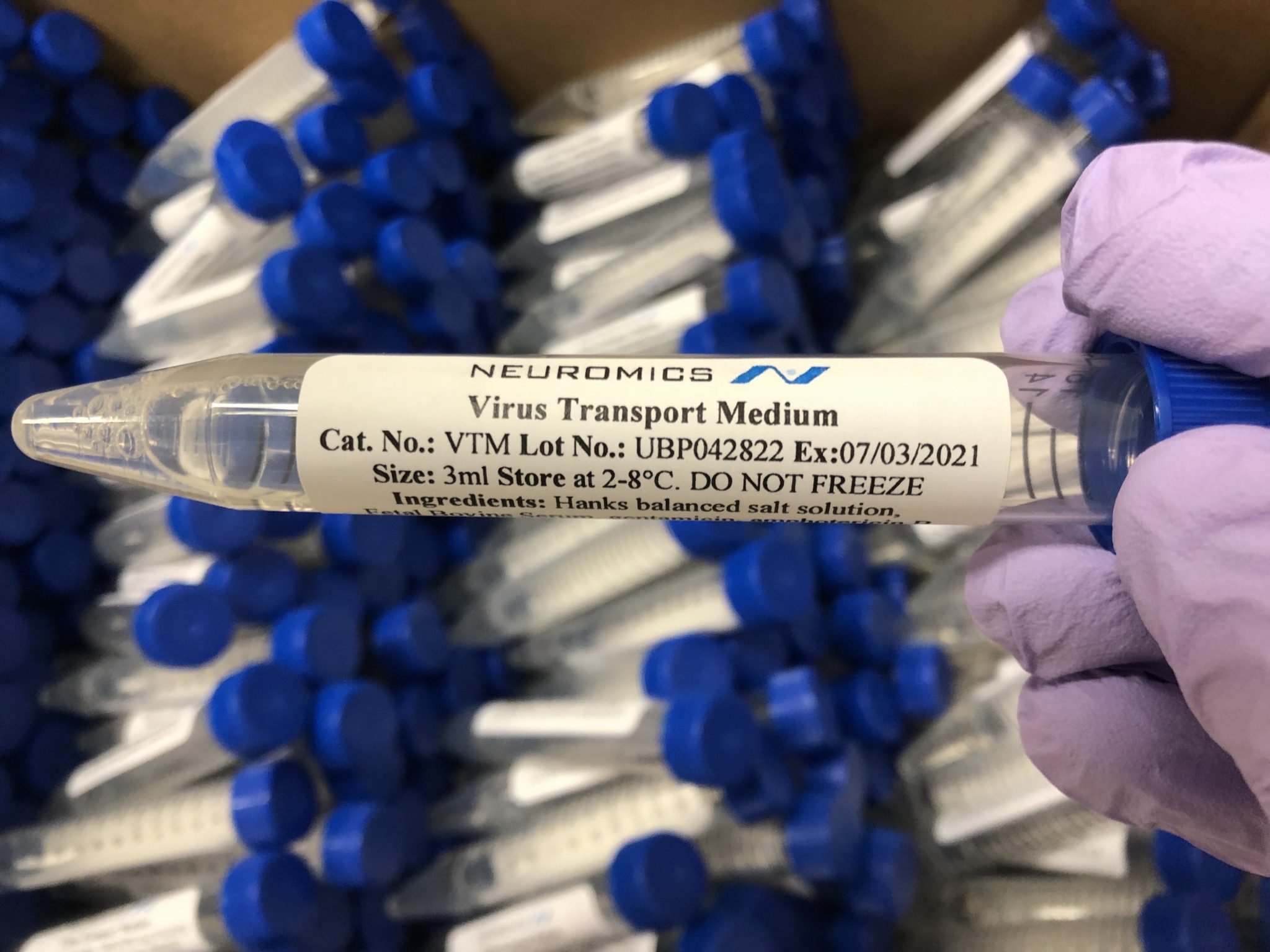
Neuromics offers various products that can be used in COVID-19 testing, including Virus Transport Media, nuclease free water, and saline solutions.
Our virus transport media is designed to transport viruses, including COVID-19, for research and testing purposes. Using our high quality FBS, each lot of virus transport media (VTM) is manufactured in the United States under strict guidelines (see formulation) as outlined by the CDC, is sterile, and undergoes quality control before release. Furthermore, our VTM is available in both tubes, kits (include sterile swabs), or bulk quantities, allowing us to meet the needs of all types of buyers.
CDC Compliant Virus Transport Media and Kits
| Name | Catalog # | Size |
| Virus Transport Media | VTM | VTM-2: 3 ml VTM in 15 ml tube |
| Virus Transport Media | VTM | VTM-3: 50 ml |
| Virus Transport Media | VTM | VTM-4: 100 ml |
| Virus Transport Media | VTM | VTM-5: 500 ml |
| Virus Transport Media | VTM | VTM-6: 1000 ml |
| Virus Transport Media with Swabs | VTM-Kit | VTM-Kit: Tube w/ 3 ml VTM, sterile swab, bhz bag (min. 100) |
| Virus Transport Media with Swabs | VTM-Kit | VTM-with-Swab: 12 ml tube with 3 ml VTM and sterile swab |
Neuromics offers antibodies and cell based assays that can help researchers find answers to questions about the COVID-19 virus. We offer SARS-CoV2 S-Protein ACE2 Binding Domain antibodies, which target the binding domain of the ACE2 protein where SARS-CoV2 has been shown to attach. Additionally, recent research has shown that COVID-19 can pass through the blood-brain barrier. Our 3-D Human Blood-Brain Barrier Model is the perfect tool to explore this phenomenon.
| Name | Catalog # | Type | Species | Applications | Size |
| ACE2-GFP Human Lung Airway Smooth Muscle Cells | HMC001 | Primary Cells | Cell Assays | 500,000 Cells | |
| ACE2-GFP Human Pulmonary Artery Endothelial Cells | HEC24 | Primary Cells | Human | Cell Assays | 500,000 Cells |
| ACE2-GFP Human Pulmonary Bronchial/Tracheal Epithelial Cells | HPEC003 | Primary Cells | Human | Cell Assays | 500,000 |
| ACE2-GFP Human Pulmonary Lobar Bronchial Epithelial Cells | HPEC001 | Primary Cells | Human | Cell Assays | 500,000 Cells |
| ACE2-GFP Human Pulmonary Small Airway Epithelial Cells | HPEC002 | Primary Cells | Human | Cell Assays | 500,000 Cells |
| Human Blood Brain Barrier Model | 3D45002 | 3D Cell/Tissue Models | Human | In vivo Like Assays | 12 well |
| Human Blood Brain Barrier Model | 3D45002 | 3D Cell/Tissue Models | Human | In vivo Like Assays | 24 well |
| Human Blood Brain Barrier Model | 3D45002 | 3D Cell/Tissue Models | Human | In vivo Like Assays | 6 well |
| Name | Catalog # | Type | Species | Applications | Size |
| SARS-CoV2 S-Protein ACE2 Binding Domain | MO22195 | Mouse IgG | Not Applicable | ICC, WB, IF | 100 ul |
| SARS-CoV2 S-Protein ACE2 Binding Domain | MO22198 | Mouse IgG | Not Applicable | ICC, WB, IF | 100 ul |
| SARS-CoV2 S-Protein ACE2 Binding Domain | RA22140 | Rabbit IgG | Not Applicable | ICC, WB, IF | 100 ul |
| Name | Catalog # | Type | Species | Applications | Size |
| SARS-CoV-2 peptide ALNTLVKQL (HLA-A*0201) for stimulation of T-cells | 6-7112-901 | Peptide | Human | Cell Assays | 1 mg |
| SARS-CoV-2 peptide ALNTLVKQL (HLA-A*0201) for stimulation of T-cells | 6-7112-901 | Peptide | Human | Cell Assays | 5 x 1 mg |
| SARS-CoV-2 peptide FIAGLIAIV (HLA-A*0201) for stimulation of T-cells | 6-7111-901 | Peptide | Human | Cell Assays | 1 mg |
| SARS-CoV-2 peptide FIAGLIAIV (HLA-A*0201) for stimulation of T-cells | 6-7111-901 | Peptide | Human | Cell Assays | 5 x 1 mg |
| SARS-CoV-2 peptide FVSEETGTL (HLA-A*0206) for stimulation of T-cells | 6-7124-901 | Peptide | Human | Cell Assays | 1 mg |
| SARS-CoV-2 peptide FVSEETGTL (HLA-A*0206) for stimulation of T-cells | 6-7124-901 | Peptide | Human | Cell Assays | 5 x 1 mg |
| SARS-CoV-2 peptide GYQPYRVVVL (HLA-A*2402) for stimulation of T-cells | 6-7121-901 | Peptide | Human | Cell Assays | 1 mg |
| SARS-CoV-2 peptide GYQPYRVVVL (HLA-A*2402) for stimulation of T-cells | 6-7121-901 | Peptide | Human | Cell Assays | 5 x 1 mg |
| SARS-CoV-2 peptide ILLNKHIDA (HLA-A*0201) for stimulation of T-cells | 6-7115-901 | Peptide | Human | Cell Assays | 1 mg |
| SARS-CoV-2 peptide ILLNKHIDA (HLA-A*0201) for stimulation of T-cells | 6-7115-901 | Peptide | Human | Cell Assays | 5 x 1 mg |
| SARS-CoV-2 peptide KIADYNYKL (HLA-A*0201) for stimulation of T-cells | 6-7119-901 | Peptide | Human | Cell Assays | 1 mg |
| SARS-CoV-2 peptide KIADYNYKL (HLA-A*0201) for stimulation of T-cells | 6-7119-901 | Peptide | Human | Cell Assays | 5 x 1 mg |
| SARS-CoV-2 peptide KVGGNYNYL (HLA-A*0201) for stimulation of T-cells | 6-7120-901 | Peptide | Human | Cell Assays | 1 mg |
| SARS-CoV-2 peptide KVGGNYNYL (HLA-A*0201) for stimulation of T-cells | 6-7120-901 | Peptide | Human | Cell Assays | 5 x 1 mg |
| SARS-CoV-2 peptide LALLLLDRL (HLA-A*0201) for stimulation of T-cells | 6-7116-901 | Peptide | Human | Cell Assays | 1 mg |
| SARS-CoV-2 peptide LALLLLDRL (HLA-A*0201) for stimulation of T-cells | 6-7116-901 | Peptide | Human | Cell Assays | 5 x 1 mg |
| SARS-CoV-2 peptide LLLDRLNQL (HLA-A*0201) for stimulation of T-cells | 6-7117-901 | Peptide | Human | Cell Assays | 1 mg |
| SARS-CoV-2 peptide LLLDRLNQL (HLA-A*0201) for stimulation of T-cells | 6-7117-901 | Peptide | Human | Cell Assays | 5 x 1 mg |
| SARS-CoV-2 peptide LQLPQGTTL (HLA-A*0201) for stimulation of T-cells | 6-7118-901 | Peptide | Human | Cell Assays | 1 mg |
| SARS-CoV-2 peptide LQLPQGTTL (HLA-A*0201) for stimulation of T-cells | 6-7118-901 | Peptide | Human | Cell Assays | 5 x 1 mg |
| SARS-CoV-2 peptide LSPRWYFYY (HLA-A*2402) for stimulation of T-cells | 6-7123-901 | Peptide | Human | Cell Assays | 1 mg |
| SARS-CoV-2 peptide LSPRWYFYY (HLA-A*2402) for stimulation of T-cells | 6-7123-901 | Peptide | Human | Cell Assays | 5 x 1 mg |
| SARS-CoV-2 peptide PYRVVVLSF (HLA-A*2402) for stimulation of T-cells | 6-7122-901 | Peptide | Human | Cell Assays | 1 mg |
| SARS-CoV-2 peptide PYRVVVLSF (HLA-A*2402) for stimulation of T-cells | 6-7122-901 | Peptide | Human | Cell Assays | 5 x 1 mg |
| SARS-CoV-2 peptide VLNDILSRL (HLA-A*0201) for stimulation of T-cells | 6-7113-901 | Peptide | Human | Cell Assays | 1 mg |
| SARS-CoV-2 peptide VLNDILSRL (HLA-A*0201) for stimulation of T-cells | 6-7113-901 | Peptide | Human | Cell Assays | 5 x 1 mg |
| SARS-CoV-2 peptide VVFLHVTYV (HLA-A*0201) for stimulation of T-cells | 6-7114-901 | Peptide | Human | Cell Assays | 1 mg |
| SARS-CoV-2 peptide VVFLHVTYV (HLA-A*0201) for stimulation of T-cells | 6-7114-901 | Peptide | Human | Cell Assays | 5 x 1 mg |
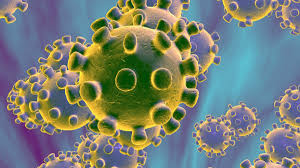

Over time, we are learning more and more about the COVID-19 virus. Recent research (read more to explore) has been showing that SARS-CoV-2 can pass through the Blood-Brain Barrier to attack Neurons and Endothelial Cells in the brain. The virus is using the ACE2 receptor as the gateway to enter various cell types, including brain cells.
Our 3D Human Blood-Brain Barrier Model is the perfect way to study this interaction with the COVID-19 virus. By culturing and layering in an insert brain endothelial cells, pericytes, and astrocytes, this model truly mimics the transport properties of the Blood-Brain Barrier.
Here are some studies and articles explaining this phenomenom:
- COVID-19 Affects Human Neurons, Mini-Brains Show
- Expression of ACE2 in Human Neurons Supports the Neuro-Invasive Potential of COVID-19 Virus
- The New Coronavirus Can Infect Brain Cells, Study Finds
- Effects of COVID-19 on the Nervous System
In addition to our Blood-Brain Barrier, we have a wide selection of Primary Human Neurons and Fetal Bovine Serum that can help take your research to the next level.
| Name | Catalog # | Type | Species | Applications | Size |
| 3D HUVEC Model | 3D45001 | 3D Cell/Tissue Models | Human | In vivo Like Assays | 12 well |
| 3D HUVEC Model | 3D45001 | 3D Cell/Tissue Models | Human | In vivo Like Assays | 24 well |
| 3D HUVEC Model | 3D45001 | 3D Cell/Tissue Models | Human | In vivo Like Assays | 6 well |
| Human BBB Model Media | NMBBB01 | Cell Growth Media | Human | In vivo Like Assays | 500 ml – Media |
| Human Blood Brain Barrier Model | 3D45002 | 3D Cell/Tissue Models | Human | In vivo Like Assays | 12 well |
| Human Blood Brain Barrier Model | 3D45002 | 3D Cell/Tissue Models | Human | In vivo Like Assays | 24 well |
| Human Blood Brain Barrier Model | 3D45002 | 3D Cell/Tissue Models | Human | In vivo Like Assays | 6 well |
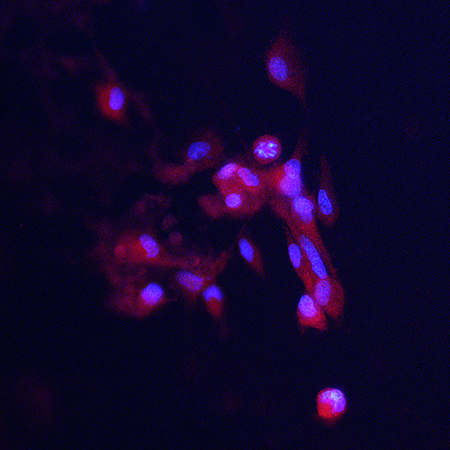

Recent research shows the SARS-CoV2 virus penetrates the blood-brain barrier (BBB), causing neurological damage. Patients have reported both short-term and long-term neurological issues stemming from the virus.
SARS-CoV2 enters the central nervous system (CNS) by binding to the ACE-2 receptors on human brain endothelial cells (HBECs) and human astrocytes (HAs) that form the BBB. After infecting HBECs and HAs, the virus alters the tight junctions of the BBB to pass through and infect microglia of the CNS (Reynolds et al. 2021).
Neuromics 3D human blood-brain barrier model (cat. no. 3D45002) is the perfect tool for researchers studying the virus’ impact on the brain, as we continue to generate data demonstrating that our model truly mimics the properties of the BBB. Our model is developed to be highly reproducible, utilizing co-cultures of our human brain microvascular endothelial cells (cat. no. HEC02), human brain astrocytes (cat. no. HMP202), and human brain microvascular pericytes (cat. no. HMP104) layered in inserts to form the same tight junctions present in the BBB.
Earlier this week, we used IHC staining to check for ACE-2 expression in HBECs on the bottom of the inserts. Our results (see the image below) demonstrate that HBECs in our model express ACE-2, just as HBECs in the BBB in vivo.
While testing for ACE-2 expression, we received results (linked here) confirming the transendothelial electrical resistance (TEER) of our activated BBB model is in line with the BBB in vivo. Testing the TEER in all six inserts of our 12 well BBB model, we found that the TEER had a range of 165.66 Ω x cm2 to 270.93 Ω x cm2. With all readings exceeding the 150 Ω x cm2 minimum, our model further demonstrated its viability.
Explore all data and learn more about our 3D human BBB model here. You can explore all of our human cells & tissues as well. If you have any questions or are interested in ordering, contact our technical team technical@stratech.co.uk .
Citation:Reynolds, Jessica L., and Supriya D. Mahajan. “SARS-COV2 Alters Blood Brain Barrier Integrity Contributing to Neuro-Inflammation.” Journal of Neuroimmune Pharmacology 16.1 (2021): 4-6.
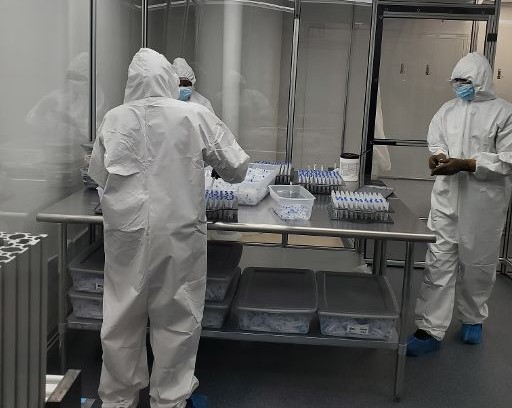

As the COVID-19 pandemic continues to affect lives everywhere across the globe, Neuromics has begun to manufacture Molecular Transport Media (MTM). For the next few months, we will be filling hundreds of thousands of tubes with MTM to be used in COVID-19 testing.
This new media deactivates the COVID-19 virus and extracts its genetic material for simple PCR diagnosis.
We’d like to say a big thank you to our team for working around the clock to get MTM production up and running.
In addition to MTM, we continue to manufacture Virus Transport Media. Currently, we have up to 50,000 15 ml tubes with 3 ml VTM available. Email us at technical@stratech.co.uk if you have any need for a transport media.
Along with MTM and VTM, we have many more products that are perfect for COVID-19 testing and research tasks.
Better understanding the COVID-19 virus is key in developing therapeutics that could help end the pandemic. At Neuromics, we offer many reagents that can be used in COVID-19 research, including human cells, antibodies, and more.
Recently, researchers from Emory University released their preliminary findings on the pathogenesis of severe COVID-19 using our Human Small Intestine Endothelial Cells.
Image: Detected auto Ig levels in specific cell types, including our human small intestine endothelial cells (HSIMEC)
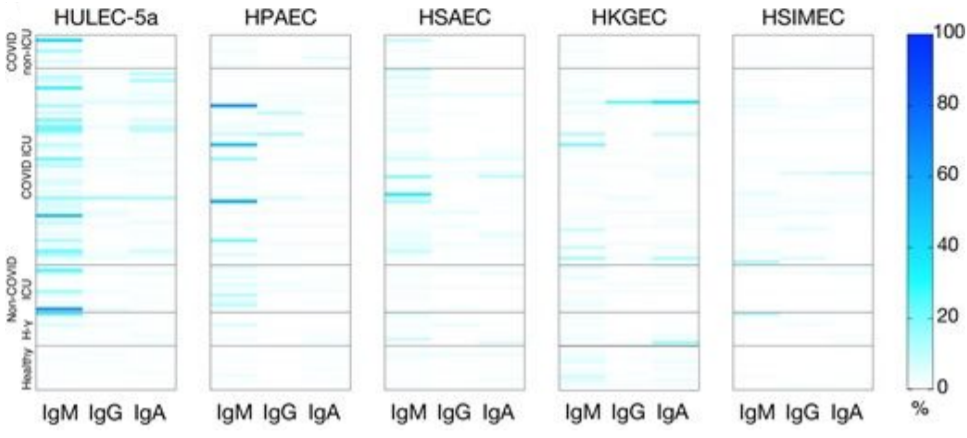

Researchers looked at the plasma of COVID-19 patients and compared it to healthy patients. They discovered that a high proportion of plasma from critically ill COVID-19 patients contained auto-reactive immunoglobulin M (IgM) and infrequently auto-reactive IgG or IgA when compared to the plasma from the control group. They also looked at how the auto-IgM cells recognized various cell types in vitro. This research suggests IgM-mediated autoimmune reactivity may play a role in severe COVID-19, and could be looked at as a therapeutic target.
Citation
- Cheryl Maier, Andrew Wong, Isaac Woodhouse, Frank Schneider, Deanna Kulpa, and Guido Silvestri. (2020). Broad Auto-Reactive IgM Responses Are Common in Critically Ill COVID-19 Patients.Research Square. doi: 10.21203/rs.3.rs-128348/v1
During the past few months, Neuromics has devoted much of our attention and expertise to helping how we are able during this pandemic. Much of this focus has been and continues to be spent on manufacturing and supplying virus transport media to those who need it. However, we are also excited to offer three new antibodies that are perfect for researching COVID-19. These SARS-CoV2 S-Protein ACE2 Binding Domain antibodies can help us better understand the virus and are perfect for vaccine research.
Image: Cells were transfected with the DNA encoding the S-protein segment in SARS-CoV2 binding domain protein which was inserted in the pCI-Neo-Mod expression vector. MO22195 produces clean and specific staining of transfected cells. The nuclei of transfected and untransfected cells are shown in blue with DAPI DNA stain.
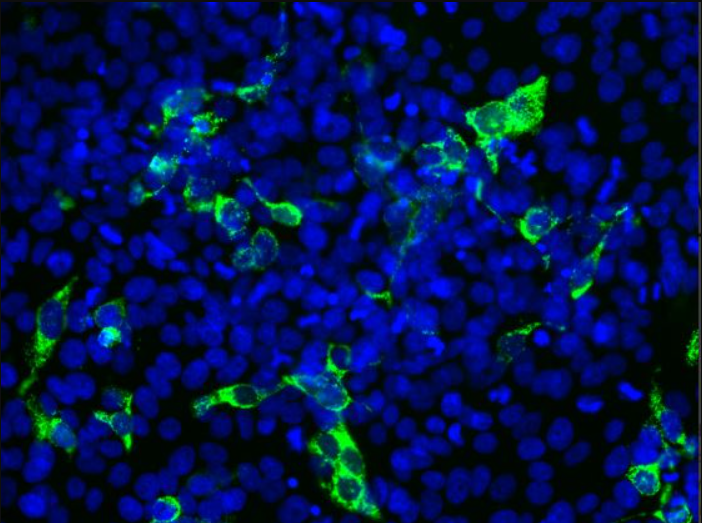


| Name | Catalog # | Type | Species | Applications | Size |
| SARS-CoV2 S-Protein ACE2 Binding Domain | MO22195 | Mouse IgG | Not Applicable | ICC, WB, IF | 100 ul |
| SARS-CoV2 S-Protein ACE2 Binding Domain | MO22198 | Mouse IgG | Not Applicable | ICC, WB, IF | 100 ul |
| SARS-CoV2 S-Protein ACE2 Binding Domain | RA22140 | Rabbit IgG | Not Applicable | ICC, WB, IF | 100 ul |
The SARS-CoV2 virus’ spike or S-protein has been shown to interact with the ACE2 protein to bind and infect human cells. Our antibodies take advantage of this knowledge, allowing us to make antibodies to the ACE2 binding site of the SARS-CoV2 S-Protein. This allows research that can identify the presence of the SARS-CoV2 virus in western blots or immunofluorescence images (as seen in the images above and below).


Image: Western blot analysis of HEK293 cell lysates using rabbit pAb to SARS-CoV2-bd protein, RA22140, dilution 1:2,000 in green: [1] protein standard, [2] non-transfected cells, [3] cells transfected with pCI-Neo-Mod vector containing the SARS-Cov-bd cDNA, and [4] cells transfected with pCI-Neo-GFP vector containing the SARS-CoV-bd cDNA. The band at 25kDa in lane 2 demonstrates expression of SARS-CoV-bd protein, and the band at about 50kDa in lane 3 corresponds to GFP-SARS-CoV-bd fusion protein.
